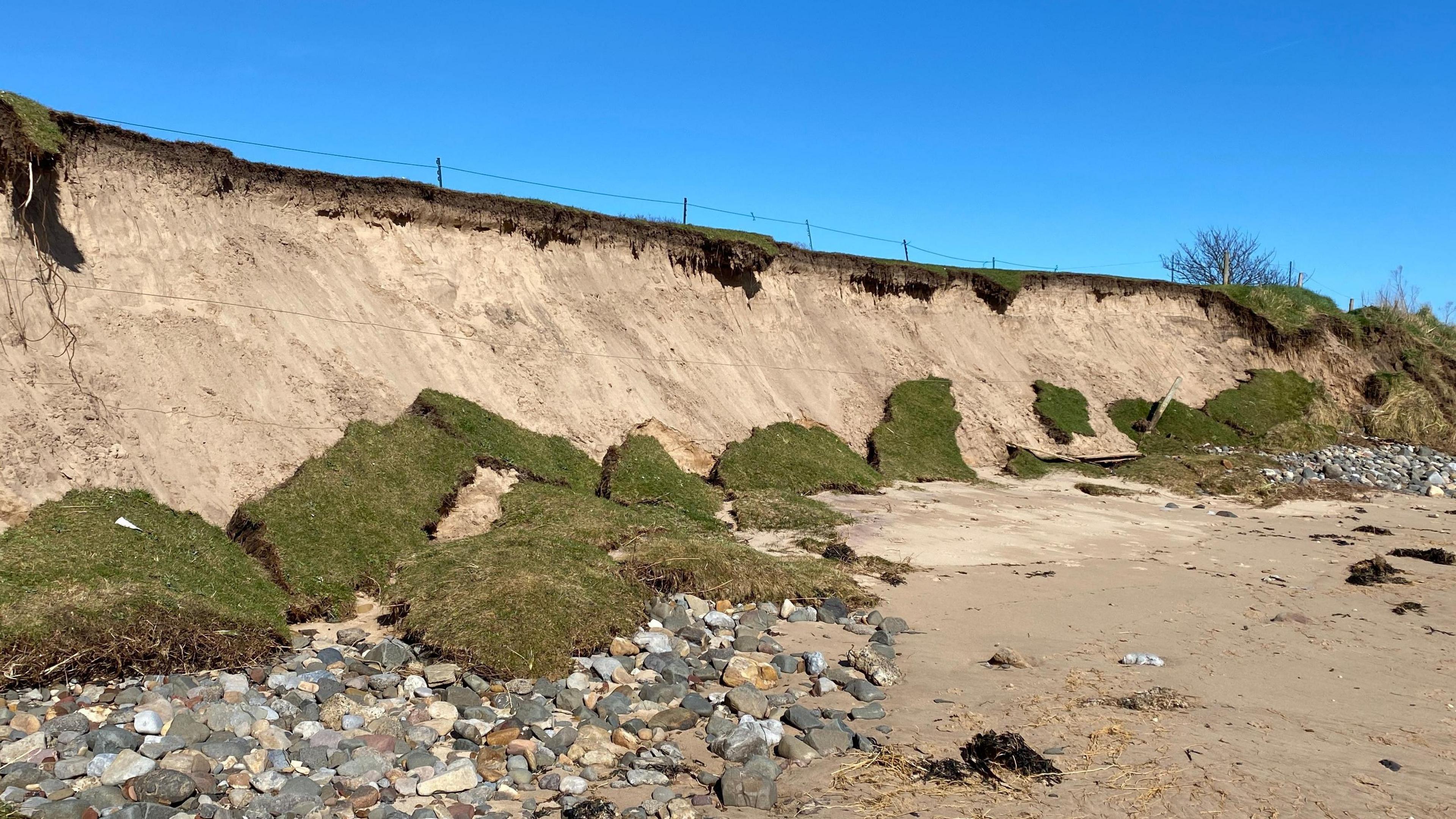Buried 'WW2 defences' appear on beach
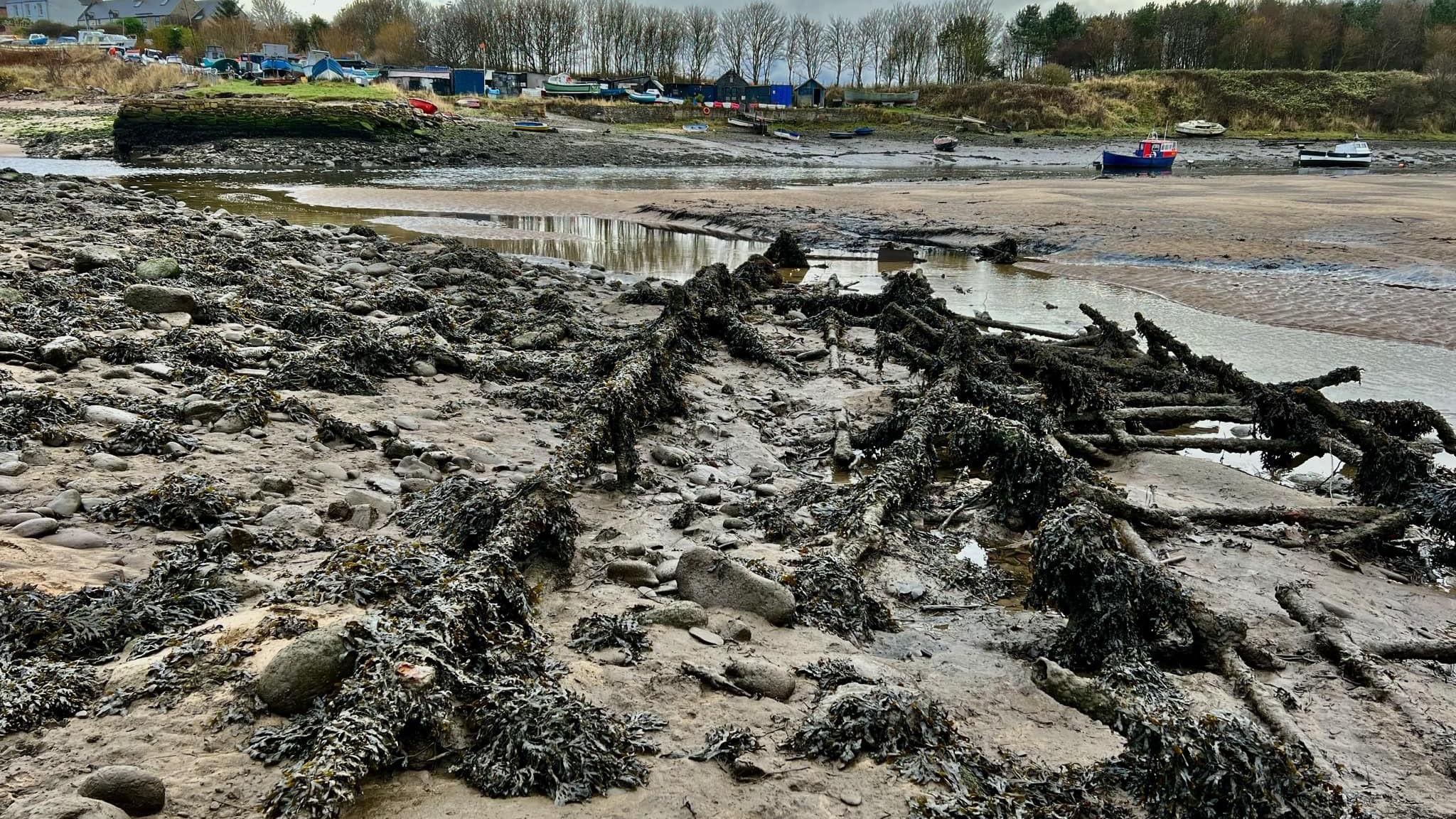
Coastal defences were built along most of the Northumberland coast in 1940
- Published
Metal structures, thought to be World War Two defences installed in case of a Nazi invasion, have emerged on a beach.
The lines of poles were spotted at low tide on Sandy Bay at Cambois, Northumberland, earlier this month.
Historian Colin Durward who runs Blyth Battery, a wartime site six miles (9.6km) further south, said he believed they were there to stop landing craft.
"They don't emerge often but they are a reminder of just how real the fear of a German invasion was," he said.
The jumble of metal was spotted by Mark Richardson, from Cullercoats, North Tyneside, while walking his dog.
"My parents had a caravan at Sandy Bay and I used to fish, so I was always at that spot," he said.
"I don't get up there as much these days but I've never seen them before."
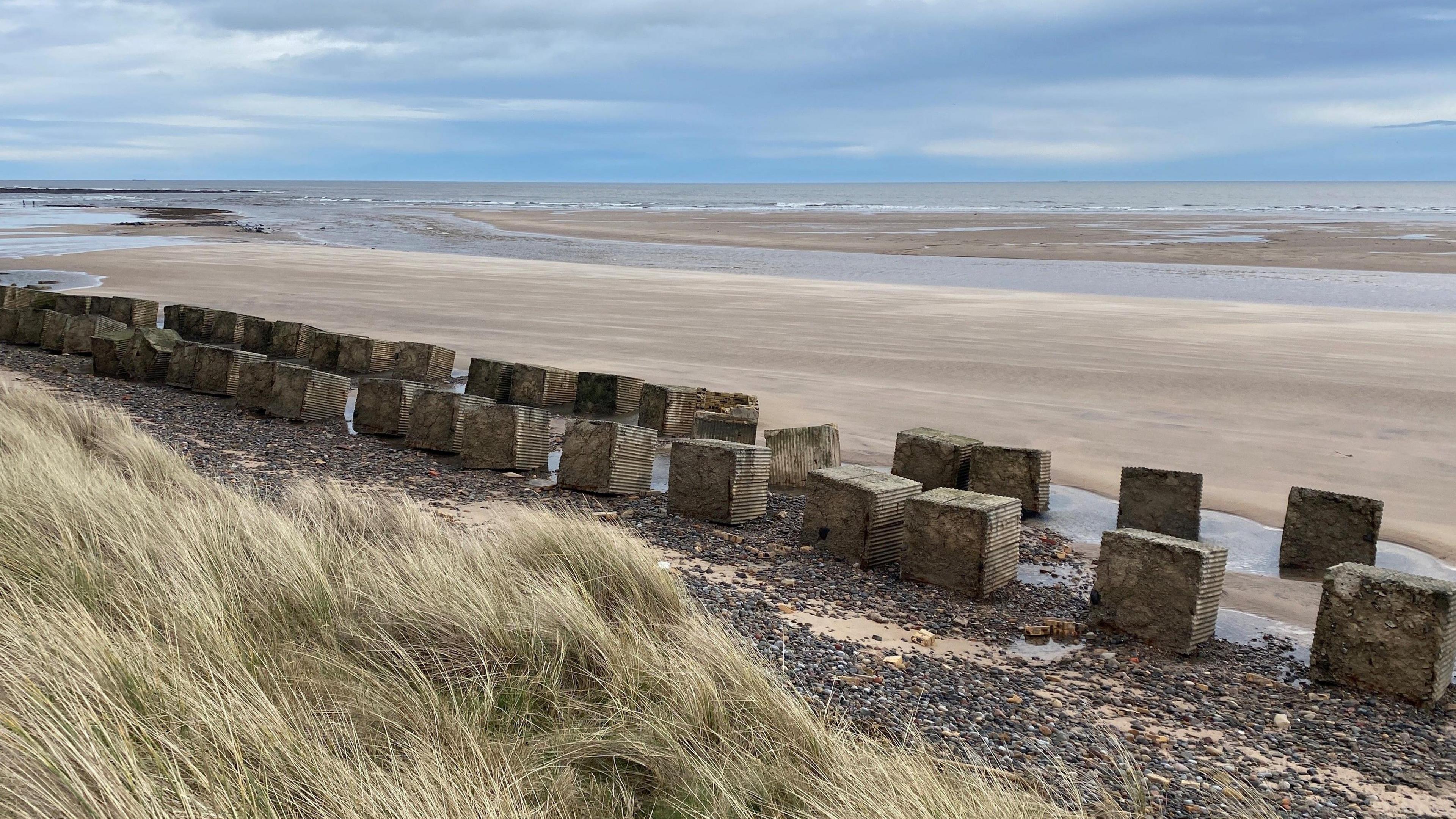
Coastal erosion caused by winter storms has also exposed hundreds of concrete blocks placed on beaches in Northumberland in 1940
High tides and winter storms have caused the Northumberland coast to retreat by several metres in places.
It has revealed old pipes and other World War Two defences, like rows of tank traps.
"The poles look like the same kind of structure that emerged in 2021 at Meggie's Burn in Blyth," Mr Durward said.
"Following Dunkirk in 1940, they fortified the whole coast with big tank blocks and then scaffolding poles which would rip the bottoms out of boats.
"There was definitely a battery at Cambois, so it would make sense, it's just there wasn't a lot written down about these defences."
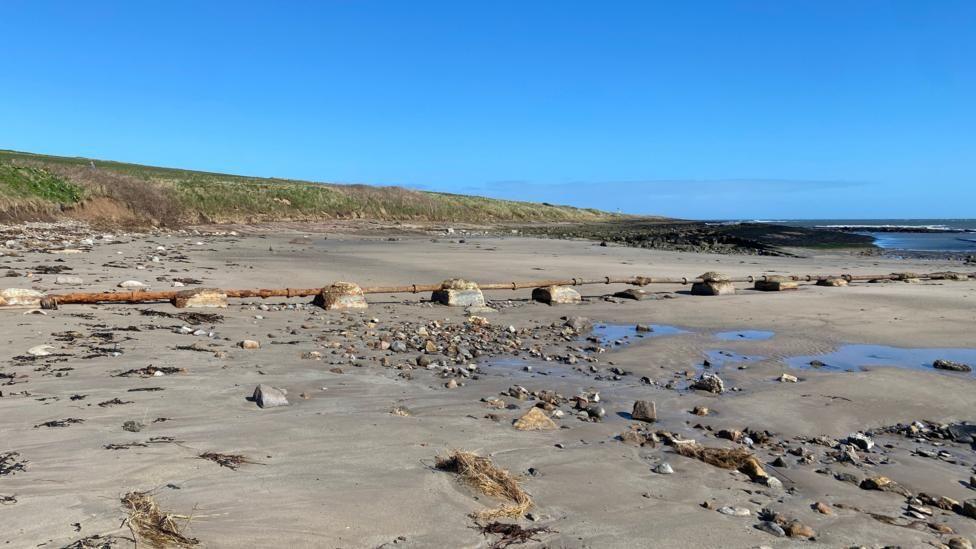
Many structures usually buried on the beach have been uncovered
Nick Best, Northumberland County Council's assistant archaeologist, said: "From a photograph it is difficult to be sure, but anti-invasion features are a common occurrence along this section of coast, including some very clear examples of World War Two defences exposed at Blyth recently.
"There were also the familiar anti-tank cubes and in some cases barbed wire and fence posts."
Follow BBC North East on X, external, Facebook, external, Nextdoor, external and Instagram, external. Send your story ideas to northeastandcumbria@bbc.co.uk.
Related topics
More stories from BBC North East and Cumbria
- Published26 March 2024
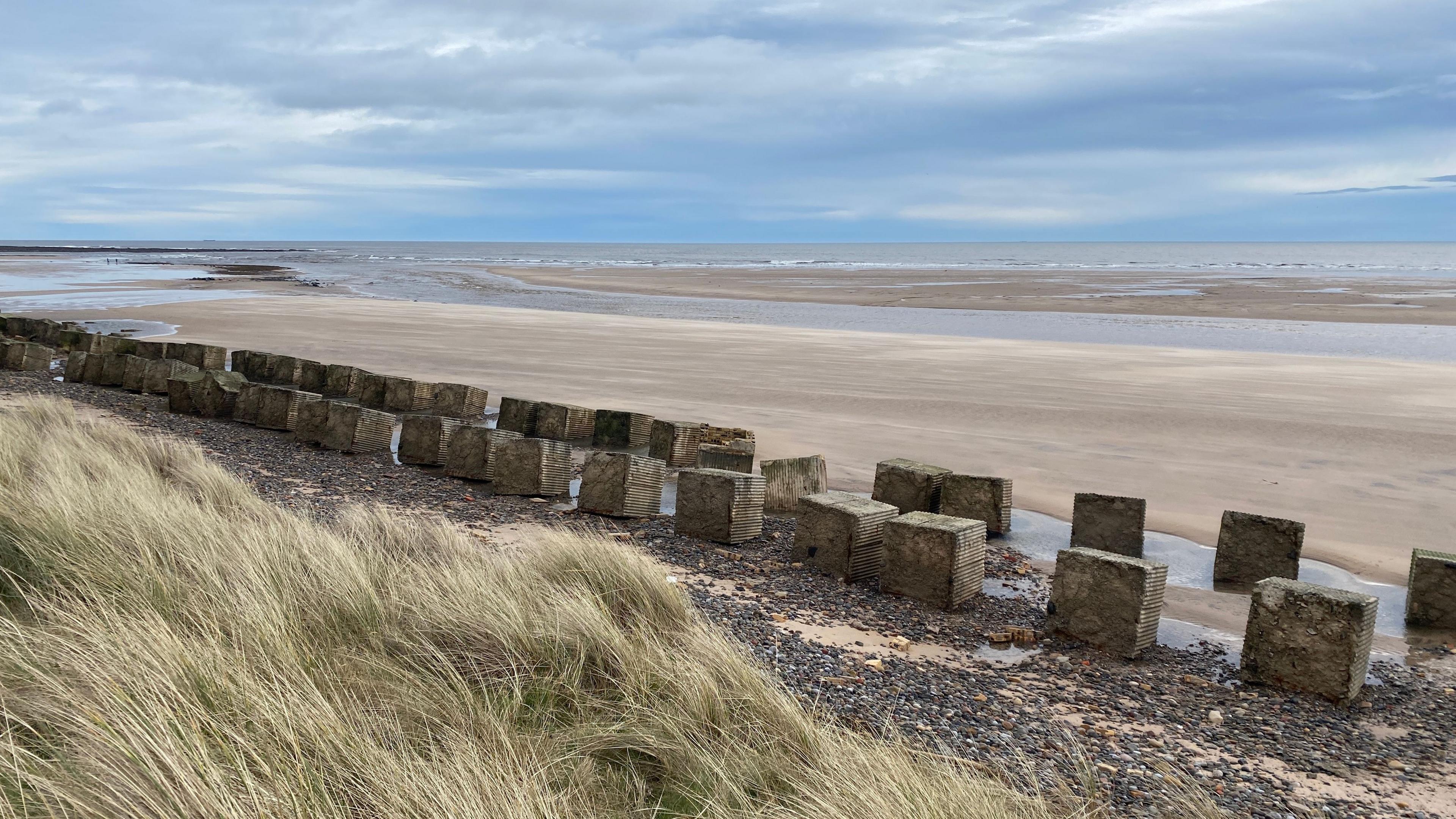
- Published14 September 2020
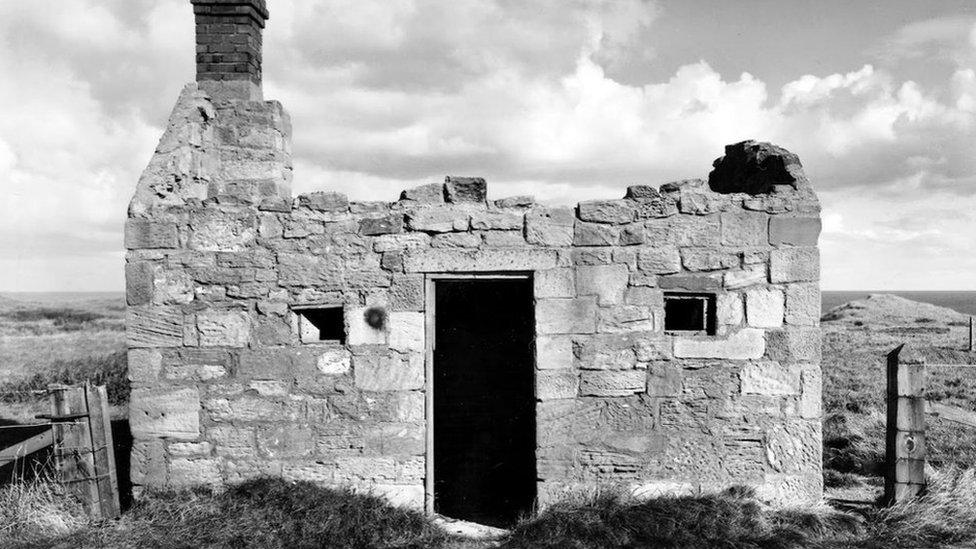
- Published19 March 2024
